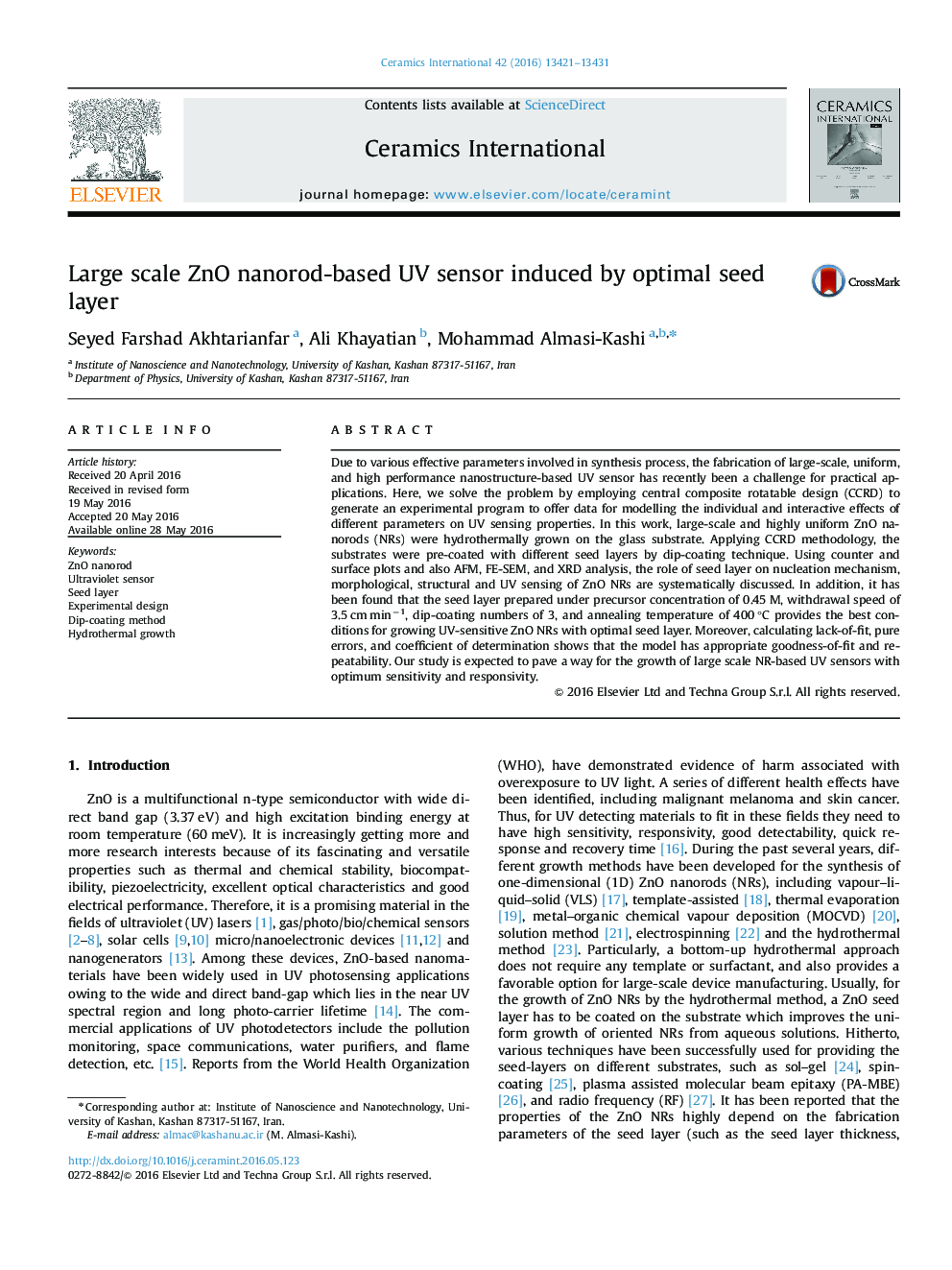| Article ID | Journal | Published Year | Pages | File Type |
|---|---|---|---|---|
| 1458497 | Ceramics International | 2016 | 11 Pages |
Due to various effective parameters involved in synthesis process, the fabrication of large-scale, uniform, and high performance nanostructure-based UV sensor has recently been a challenge for practical applications. Here, we solve the problem by employing central composite rotatable design (CCRD) to generate an experimental program to offer data for modelling the individual and interactive effects of different parameters on UV sensing properties. In this work, large-scale and highly uniform ZnO nanorods (NRs) were hydrothermally grown on the glass substrate. Applying CCRD methodology, the substrates were pre-coated with different seed layers by dip-coating technique. Using counter and surface plots and also AFM, FE-SEM, and XRD analysis, the role of seed layer on nucleation mechanism, morphological, structural and UV sensing of ZnO NRs are systematically discussed. In addition, it has been found that the seed layer prepared under precursor concentration of 0.45 M, withdrawal speed of 3.5 cm min−1, dip-coating numbers of 3, and annealing temperature of 400 °C provides the best conditions for growing UV-sensitive ZnO NRs with optimal seed layer. Moreover, calculating lack-of-fit, pure errors, and coefficient of determination shows that the model has appropriate goodness-of-fit and repeatability. Our study is expected to pave a way for the growth of large scale NR-based UV sensors with optimum sensitivity and responsivity.
